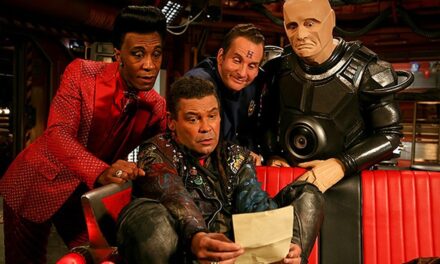1. Introduction:
Sesame Street, a beloved children’s television program, made its debut on November 10, 1969. The show falls under the educational and entertainment genre and has delighted children and adults alike for over five decades.
2. Background:
Sesame Street was created by Joan Ganz Cooney and Lloyd Morrisett. It was produced by the Children’s Television Workshop (now known as Sesame Workshop) in collaboration with other production companies such as WNET and the BBC. The aim was to provide an educational and diverse television program that could bridge the educational gap for young children from disadvantaged communities.
3. Plot and Format:
Sesame Street is set on a fictional inner-city street where various puppet characters and human actors interact. The show is structured with a mix of live-action skits, animated segments, and puppetry. It features a combination of engaging storytelling, captivating visual aids, and catchy songs to teach important concepts to its young audience.
The show covers a wide range of topics such as literacy, numbers, basic problem-solving, emotional intelligence, cultural diversity, and social skills. Each episode focuses on a particular theme or concept, with recurring characters helping to reinforce these lessons. Through this format, Sesame Street offers an engaging educational experience that appeals to both children and adults.
4. Cast and Characters:
Sesame Street’s cast includes a mix of puppet characters and human actors who have become beloved icons. Some of the key cast members include:
– Big Bird (performed by Caroll Spinney): Big Bird is a large, friendly yellow bird who serves as one of Sesame Street’s main characters.
– Oscar the Grouch (performed by Caroll Spinney): Oscar is a grouchy green monster who lives in a trash can.
– Bert (performed by Frank Oz) and Ernie (performed by Jim Henson): Bert and Ernie are best friends who live together and frequently engage in humorous banter and skits.
– Elmo (performed by Kevin Clash): Elmo is a red furry monster known for his high-pitched voice and lovable personality.
– Cookie Monster (performed by various puppeteers): Cookie Monster, as the name suggests, has an insatiable appetite for cookies that often leads to comedic moments.
– Numerous human actors, including Bob McGrath, Loretta Long, and Emilio Delgado, who interact with the puppet characters.
Sesame Street has had the privilege of hosting a remarkable array of guest stars over the years, including prominent figures such as YouTuber Mark Rober and former First Lady Michelle Obama. These guest stars contribute to the show’s educational content, offering their expertise and influence to reach and inspire young viewers.
5. Reception:
Sesame Street has been widely praised for its educational content, creativity, and its ability to engage young children. The show has won numerous awards, including over 160 Emmy Awards, making it one of the most decorated programs in television history.
Critics have lauded Sesame Street for its commitment to inclusivity and addressing social issues. It has been credited with introducing diverse characters and covering subjects such as racial equality, disability awareness, and acceptance of others.
The impact of Sesame Street on popular culture is undeniable. It has become a global phenomenon, reaching millions of children in over 150 countries. The show’s influence has extended beyond television, with the introduction of books, toys, and even theme park attractions centered around the beloved characters.
6. Legacy:
Sesame Street has had an enduring legacy. It revolutionized educational programming by creating a fun and engaging format that combined entertainment with learning. The show’s impact on children’s television cannot be overstated. It inspired the creation of many other educational programs and set the standard for how to effectively educate and entertain young audiences.
The success of Sesame Street has led to the creation of multiple spin-offs and adaptations in various countries. These localized versions carry the same core values and educational focus, adjusted to suit different cultures and languages. The show’s enduring popularity has made it a cultural touchstone for several generations, with many adults reflecting fondly on their experiences growing up with the show.
7. Conclusion:
Sesame Street holds a significant place in television history, cherished by both children and adults worldwide. Its ability to combine education, entertainment, and inclusivity within a vibrant and lively format has made it an enduring success. Through its beloved characters, catchy songs, and valuable life lessons, Sesame Street has left an indelible mark on generations of viewers. It remains an essential and memorable part of many childhoods and a testament to the power of educational television.













